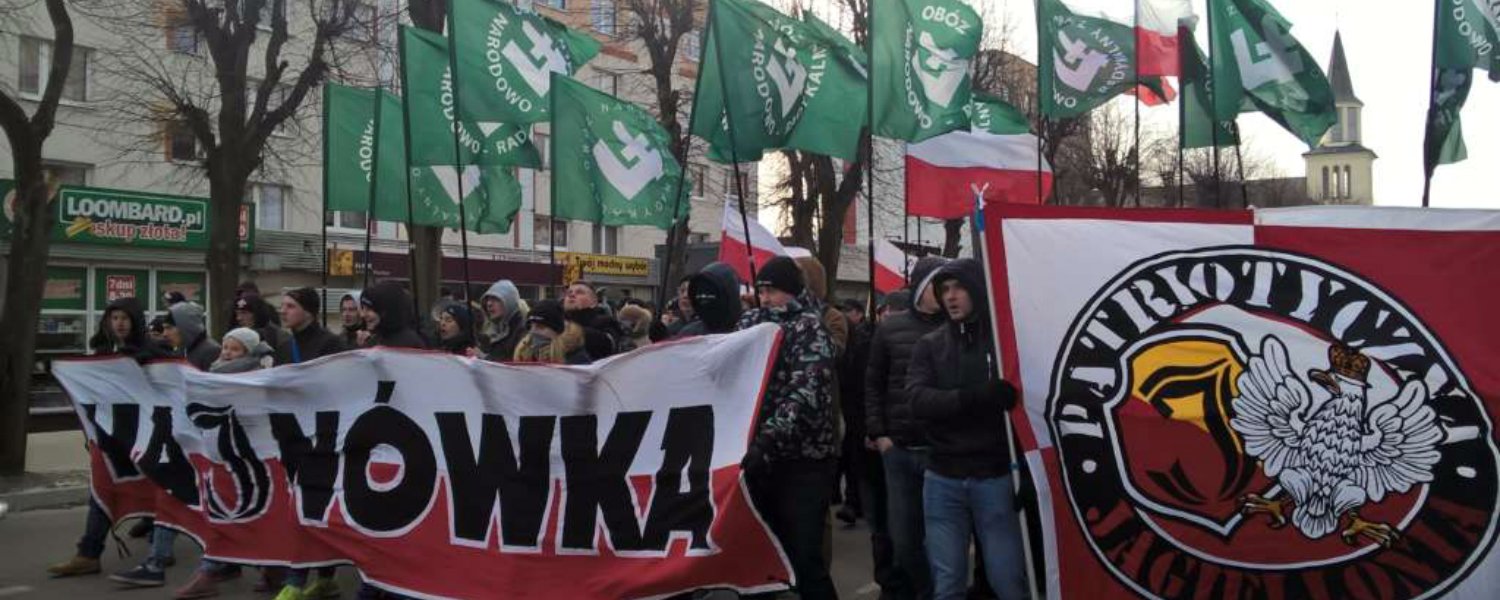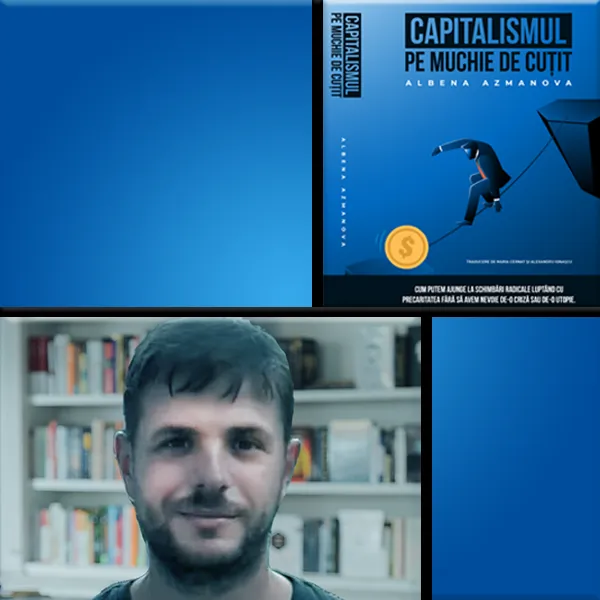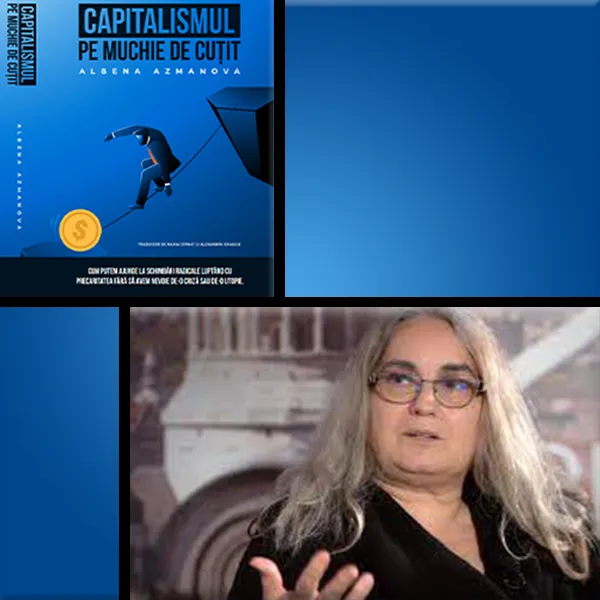“In a blessed falling asleep, grant, O Lord, eternal rest unto Thy departed servants…” Pause. Before Father Jan Romańczuk finishes the memorial service for the victims of Romuald Rajs’s troop, he has to put his glasses on. Otherwise, he would not be able to read the names of those for whom he is praying. He could just say “for all the innocently killed” and the attendees would know the tragedy behind these words. He will mention everyone’s name anyway.
And so in the bright sunlight shining through the window of the Church of the Birth of St. John the Baptist in Hajnówka on the frescos, stern faces of the apostles, monks, orthodox rulers, and martyrs, the names of simple peasants and ordinary rural women are pronounced in Church Slavonic. “Thy killed servants… Piotr, Grzegorz, Konstanty, Nadzieja, Sergiusz, Aleksy…”
Another pause, very short this time, when the priest corrects himself: Aleksy was a little boy. The Orthodox tradition requires reminding of this fact and praying for the soul of young Aleksy. The names of young Anna and young Sofia are read in the same way. There are 79 names in total.
Several people cannot hold back their tears when the panikhída ends with “Memory Eternal” repeated three times.
I do not remember my father
On that day, the list of victims was also read in Hajnówka near the monument to the victims of war and repressions. The sun was also shining, brightening the windy and frosty day. Approximately one hundred people came to light a candle and honor the victims before the streets filled with people shouting to praise the murderer.

Two hours are left to the nationalists march. They are going to gather several hundred meters further ahead, next to the church of the Exaltation of the Holy Cross. How many will come? Cautious optimists remember that last year the bragging of the ONR (National Radical Camp) and Narodowa Hajnówka (National Hajnowka), who talked about a gathering of several thousand radical nationalists, turned out to be exaggerated. Pessimists are afraid that internet calls for an all-Poland mobilization may have an effect. The calls are not limited to the internet — the nationalists bragged that they purchased a mobile advertisement that has for several days been roaming the streets in the center of Białystok.
Nevertheless, it does not matter how loudly they shout that “Bury” was a hero. Those gathered around the monument know the truth from their families and neighbors, like an old woman surrounded by a group of people.
She says: “I barely remember my father. I was five when Bury’s troop killed him”.
It is a daughter of one of the carters kidnapped on January 28, 1946 by the “cursed” troop. Romuald Rajs’s people had unsuccessfully tried to attack Hajnówka, but they did not have any chance of winning against a regular Soviet troop, which happened to be present at a train station nearby. Going back to the forest, they met carters sent there to collect wood as part of a corvée. They took the carters with them, forced them to transport them to Zaleszany, which they burned, and then to Wólka Wygonowska.
Maybe they will let us go
Unimaginable pain shows through this story, although the woman uses simple, precise sentences, trying to make her history easily understandable for the journalists listening to her, as they do not live there and were not alive back then.
They came to our village and said that our carters were taken by a mob. I remember my mom crying terribly, moaning… A neighbor who managed to escape told her later that when they arrived to Zaleszany, already burning, he had approached my dad and said: Fiedzia, let’s escape! But my dad replied: How can I escape — their commander, Bury, is sitting on my cart. If I take even a leg off the cart, he will kill me… Maybe they will lead us further; maybe they will let us go…
They did not. On January 31, the troop shot the Orthodox carters in the forest near Puchały Stare. The Catholics were set free. Even during his trial in Białystok, Bury did not want to reveal where his victims were. The families spend many years looking for the remains.
We went to Puchały, where people told us that the bodies were only covered with branches. In the spring, they started to smell and were scattered by dogs.

Some of the bodies from the Puchały forest were moved in 1951 to a collective grave of war victims in Klichy. All the remains were finally found in 1995. At that moment, the families of the murdered, opposed by right-wing voivode Krystyna Łukaszuk and secretary general of the Council for the Protection of Remembrance of Struggle and Martyrdom Łukasz Przewoźnik, requested another exhumation. They succeeded. In 1997, the collective grave was reopened, and the cause of death determined without any doubt. After strenuous efforts, the Orthodox Church members managed to erect a monument commemorating the carters in a military cemetery in Bielsk Podlaski and initiate a historical investigation concerning Bury’s actions.
Within the investigation, the history of the kidnapping of the carters, attack on Zaleszany, Wólka Wygonowska and later on Zanie, Szpaki, and Końcowizna, was reconstructed and analyzed. That was when, upon completing its work, the Institute for National Remembrance decided that burning villages and killing defenseless inhabitants had nothing to do with fighting for a free Poland. It was a crime bearing the hallmarks of genocide.
In recent months, the Institute for National Remembrance has quietly started to withdraw this decision. It organizes meetings during which Romuald Rajs is presented solely as a hero. The current message is: he fought against communists, which makes him a hero, and heroes cannot be judged.
Let’s run, for God’s sake
On February 24, during the second meeting with prayers and remembrance, Klaudia Kałużyńska, who also witnessed the burning of her home village of Zaleszany when she was seven years old, relayed what happened to her back then. First, she said, partisans came and demanded breakfast. When they saw through a window that a woman, her aunt, was machine sewing, they wanted her to repair their uniforms. They took horses and the cart…
And later, around 1 p.m., they called us to one house, for a meeting. We went there. The soldiers surrounded the house in which we were gathered. Two armed men stood by the door, which was sealed. First, they demanded Piotr Demianiuk, the village head’s 16-year-old son, to step out. He did not want to step out, he was kissing the soldier’s hand, and they led him out. They shot him and then a man from a neighboring village. We cried: Oh God, they killed Pietiu! His mother fainted.
The elderly woman, even after all these years, has to cross herself before telling the rest of the story, about the soldiers setting the house with people inside on fire. They also set fire to the village buildings.
And then a woman inside the house said: People! They won’t shoot us all. Let’s run, for God’s sake, some will be shot, some will live! Let’s knock out the door. I ran with my sister, she pulled me. The pigsty was on fire, the barn too… everything was on fire.
They escaped, because the soldiers guarding the house grew a conscience. They shot over people’s heads. But those who did not attend the meeting and stayed in their homes were burned alive or shot when trying to escape. A seven day old child whose parents did not take it to the meeting, because they were sure that it would not take long, died. And Klaudia Kałużyńska, after taking refuge in a neighboring village with her father and siblings, with her own eyes saw people bringing out a fatally burned woman, who had stayed at home because she was giving birth.
Telling the truth, ignoring the nationalists

What can be done to stop the phenomenon of glorifying people such as Rajs? I put this question to Adrian Zandberg, who placed his candle at the monument together with the delegation of the Razem party. Only leftist parties came to Podlasie. Apart from Razem, only the SLD (the Democratic Left Alliance) delegation visited Zaleszany. Right-wing organizations, always willing to talk about their respect for the deceased and for history, pretend not to see what is happening in this small border town.
The Razem activist emphasizes that we have to talk consistently about the historical truth, and remember that the “cursed soldiers” is an untrue all-purpose notion covering both persons such as Witold Pilecki or Kazimierz Pużak and perpetrators of war crimes, as Rajs is not the only one.
— We also have to put pressure on the authorities to use the existing law — Zandberg says. — Last year, we witnessed the nationalists encourage hatred and violence during their gathering. In such a situation, the authorities should dissolve the assembly. They have the right to do so.
Father Jan Romańczuk is under no illusion that the authorities are going to react: after the panikhida, he will tell the inhabitants that the best thing they can do is ignore the nationalists and simply go home. The organizers of the meeting at the monument add that we can put a candle in our window. They give candles to people leaving the church.
I also take one, revolting inside: How can I ignore this? We cannot pretend that nothing is happening, when the nationalists spit in the faces of all these people with their shouting. Nevertheless, several hours later, I start to wonder seriously whether the priest was right.
Only so few?
This is the first question that arises when I see the assembly next to the church of the Exaltation of the Holy Cross. One, maybe two hundred people stand under ONR and Polish flags, as well as emblems of the Warsaw uprising. They can easily fit into one photo. There are more police officers, who are guarding the march in full gear. The locals, whose curiosity and anger did not let them stay at home, are also present.
The second thought, in even greater disbelief: where are the cursed soldiers?

The march is headed by young people with an enormous white and red banner with the word “HAJNÓWKA”, where the J is stylized to resemble the symbol of the Jagiellonia football club. They wear tracksuits and jackets, only a few have “patriotic” hats. Some people in the further rows are wearing the Falanga symbols on their sleeves. They are pleased with themselves, some even amused, smiling. They look the same when they go to a match or when they return from a match won by their team. The next banner strengthens the association with football: Patriotic Jagiellonia.
The alleged heroes of the day, flawless idols, had to give their place of honor to these emblems. The poster with photos of Łupaszka and Bury, saying “Honor and glory to the heroes” that outraged the public one and two years ago was moved from the front to the side of the march. If someone watched the march less attentively or just stood on the other side, they might have not seen it at all.
Same with the outcries. Yes, Bury the hero was mentioned, exactly six times. They also shouted about Inka watching from the sky, they sang “Long live Major Łupaszka” to the tune of “Guantanamera”, they mentioned the National Armed Forces and announced a “national Hajnówka”. But these slogans seemed only to be interludes of the main message, which consisted of death threats towards non-existent communists and unseen red scoundrels. By force of habit, “Michnik’s lies” and the Platforma Obywatelska (Civic Platform) party were also slurred.
The march ended at the culture hall, where the participants watched a hagiographic film about Bury. Unlike last year, they did not have to take the longer route, because the police made sure nothing interfered with their march. Therefore, they went past the Holy Trinity Cathedral, where they stopped to shout for a moment. Later, the ONR spokesperson wrote that it was a sign of respect on Twitter.
What is the logic in that?
It’s all about beating the commies
I realize near the cathedral that there is no logic.

The anti-Orthodox provocation was only incidental. They would not be able to plan it and carry it out consciously. They went past the cathedral, because it was the shortest route. They did not enjoy giving fellow Christians a hard time, but beating virtual commies. It was only a coming apart variant of the all-Polish generational experience designed by the vulgar right-wing politics of memory.
For them, there is no contradiction between praising the murderer of Orthodox people and shouting about the great Christian — and not Catholic, due to local specificity — Poland. What is more, the leaders of Narodowa Hajnówka have nothing against the Orthodox Church members joining them (and I know there are such people). The whole march gives the impression that it is all about shouting “Down with communism”.
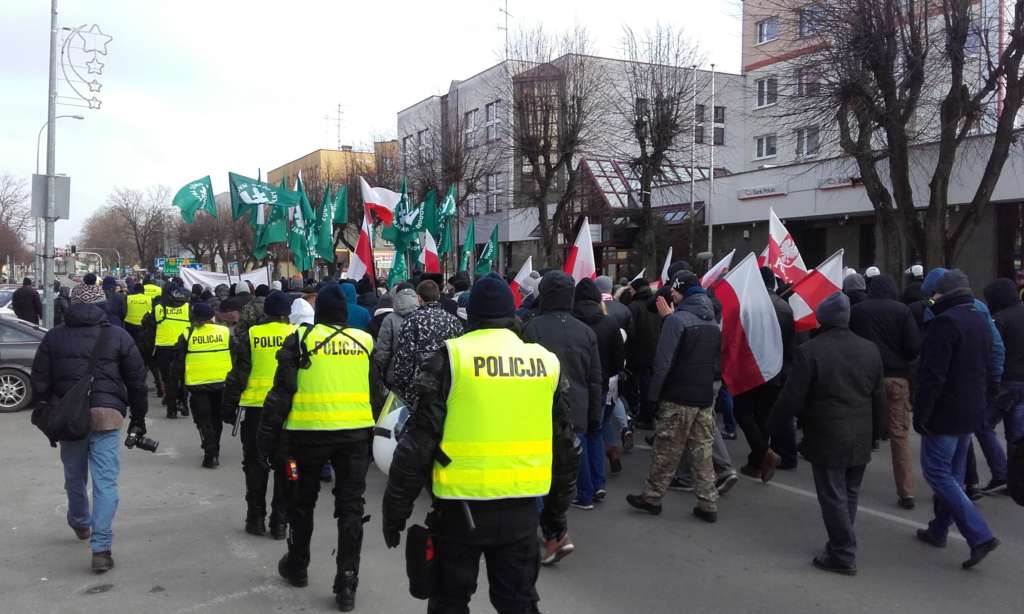
Rajs did not matter at all, actually. If only the Institute for National Remembrance, after issuing the decision in his case, hid this figure and if there were no rabid right-wing historians elaborating absurd justifications of his actions. Unfortunately, the killer of carters became one of the most popular “cursed soldiers”, praised by “rebellious” journalists, portrayed in albums of “national” publishing houses. No wonder that angry young men, whose knowledge of history is limited to repeating the most popular clichés, turned to him. They could have used only the image of Inka, loudly, but without controversy. Even the inhabitants of Hajnówka gathered around the monument said, “If one feels the need to praise these soldiers, we are fine with it. There were forest brothers who really fought. So what do we need this murderer for?!”
However, Bury will be present on all future marches, regardless of their number. When patriotic football fans noticed the indignation caused by their actions, they understood that it drew only attention to them and felt even more rebellious, like the new “cursed soldiers”.

I saw this pride in the eyes of Dawid Poleszuk, the leader of “true patriots” from Hajnówka and activist of a football fans association with a criminal past, when just before the start, a TVP journalist asked him about his opinion on the fact that Rajs’s troop killed children in Zaleszany. — There is always collateral damage during war and Bury was at war — he said without hesitation. The marchers laughed behind his back. They were happy to be the center of attention.
They wanted to be fearsome. They were not. The truly terrifying thing is the fact that this actually grotesque group managed to invoke a response. Without the loud marches in Hajnówka, the Institute for National Remembrance would not decide to incite the cult of Rajs. Without its initiatives, pseudo-opposition politicians would not bury their heads in the sand stating at best that Bury is an ambiguous figure. Finally, without their cowardice, the national right would not be unpunished and would have to tone down its admiration for the “cursed army”, or at least would not get so much attention.
Without all that, the incitement of the cult does not stop. After the march, one of the popular right-wing portals published a letter defending… Rajs’s good reputation.
Yet the police did something
Long after the march, the members of the Obywatele RP (Citizens of the Republic of Poland) organization waited for their fellow activists to be released at the Hajnówka police station at the corner of Piłsudskiego and Armii Krajowej Street.

They tried to block the march together with a group of left-wing activists, such as anarchists and Pracownicza Demokracja (Workers’ Democracy). Two activists ran on the route with a banner saying “Humanity is My Homeland”. They were pushed to the pavement, pressed to a fence, and taken to a police car. The main group of counter-demonstrators with anti-fascists slogans and a banner saying “Bury is not a hero” also had to stand behind the double police cordon.
— What are you doing? — the inhabitants who decided to watch the march near the end of its route asked the police. They were informed it was for their safety.
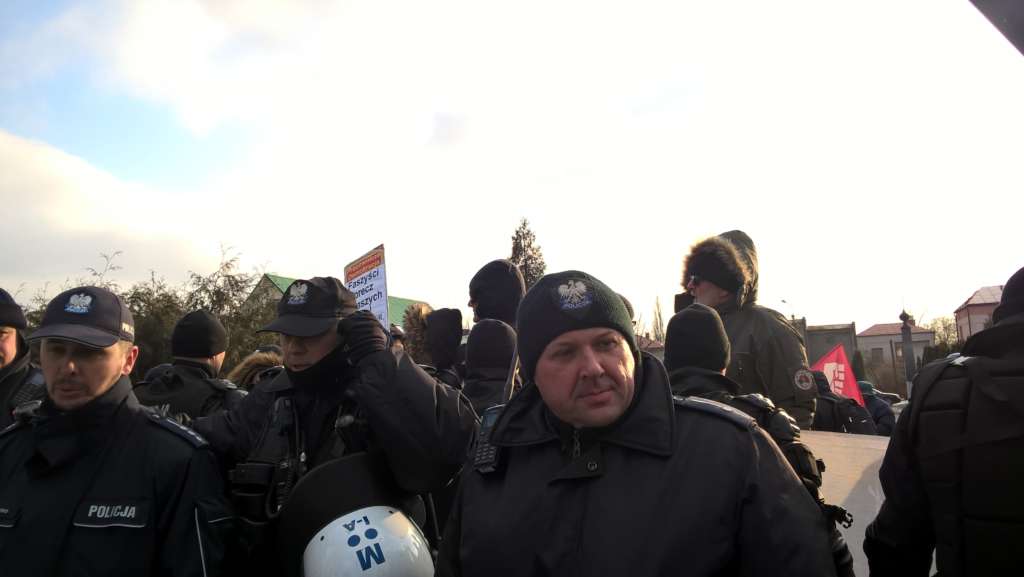
Later, after Jagiellonia fans passed by, the police decided to show its zealousness and requested some Obywatele RP activists to identify themselves. The activists claim that no legal basis was provided, so they refused to show their documents. In consequence, they were taken to the police station. They were not interrogated; they were only given an apprehension report with charges of assembly distortion and refusal to identify themselves.
On the other side of the street, the “young, active, radicals” sat behind tables at a pizzeria. They ate, drank, laughed loudly, and rushed the staff. They did not worry that there was nothing to celebrate. They did not make any progress even in terms of numbers — in comparison with the last year, there were even less marchers. They had their five minutes of fame and that counts.
But they never had a chance to impose their vision of history.








